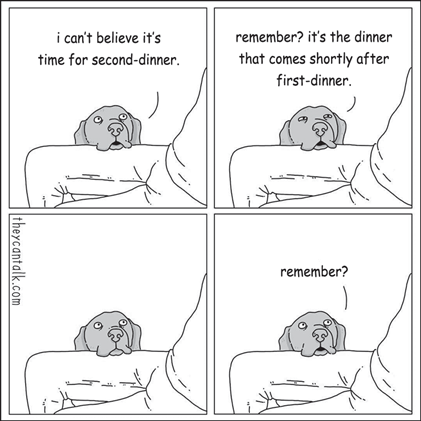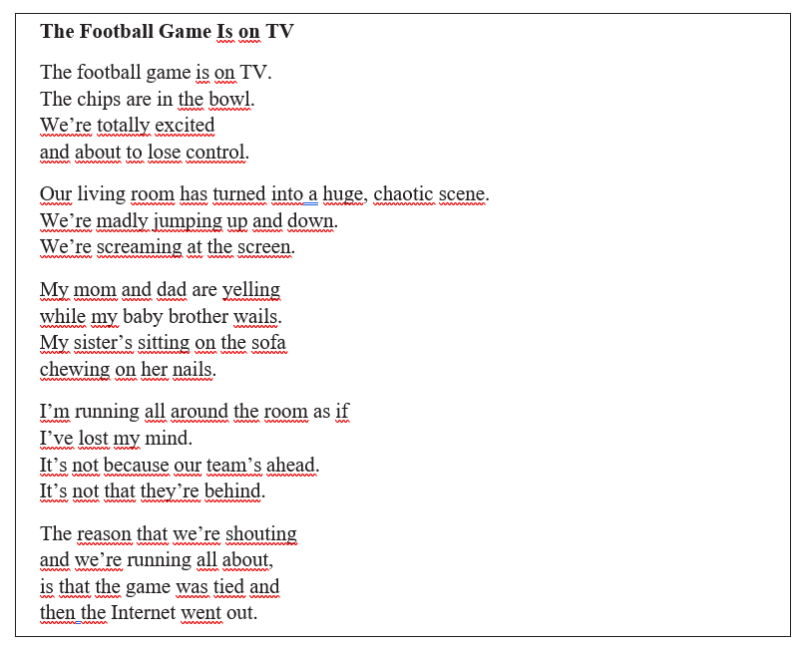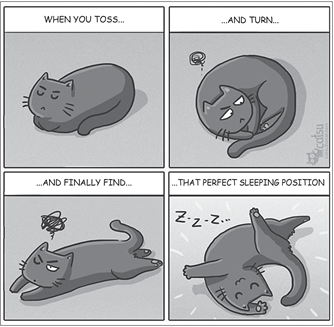AULA 14/2022 Recomposição 8º ano – Língua Inglesa - 15/08/2022
Atividades para Recomposição da Aprendizagem
Leia o texto a seguir e faça as atividades de 1 ao 4.
Anchiornis Huxleyi
This chicken-size dinosaur had feathers and winglike limbs.
A creature the size of a chicken sits on a tree branch in an ancient forest. It’s covered with feathers and has winglike limbs1. Suddenly it spreads its limbs and glides down from its perch2, landing on another branch. This animal is a bug-eating dinosaur called Anchiornis huxleyi, and it’s the oldest soaring dinosaur that paleontologists have found so far. […]
Scientists first described Anchiornis huxleyi in 2009 after finding a 150- to 160-million-year-old fossil of the dinosaur in northeastern China. The ancient animal, which lived during the Jurassic period, had long, feathered legs and curved claws on its feet that likely helped it climb trees.
It also had rows of feathers lining each arm. Despite its plumage, Anchiornis huxleyi couldn’t fly like many modern birds do. Its feathers were too short, which prevented the animal from soaring long distances. But researchers think that the dinosaur could glide on air from one tree branch to another, its limbs and feathers acting like a built-in parachute3.
About 10 million years after Anchiornis huxleyi came Archaeopteryx. Scientists are still discovering how these bird like dinosaurs evolved. But they know for sure that all of today’s birds are descended from dinos! […]
*Vocabulário:
1limbs: membros. 2perch: poleiro. 3parachute: paraquedas.
DE SEVE, Karen. Anchiornis Huxleyi. In: National Geographic Kids. Disponível em: <https://bit.ly/3ETSRun>. Acesso em: 27 abr. 2022.
Fragmento. (LEM080106I7_SUP)
1. Esse texto tem como assunto
A) as características de uma espécie de dinossauro.
B) as semelhanças entre o dinossauro e a galinha.
C) os animais que se alimentam de insetos.
D) os diferentes tipos de membros e penas de aves.
2. Nesse texto, o termo “Anchiornis huxleyi” é um exemplo de linguagem
A) arcaica.
B) científica.
C) coloquial.
D) regional.
3. No primeiro parágrafo desse texto, no termo “oldest”, a terminação “-est” foi usada para
A) apontar possibilidade.
B) indicar quantidade.
C) marcar intensidade.
D) mostrar tamanho.
4. Retire do texto uma frase que você achou mais interessante. Registre-a.
________________________________________________________________________________________________________________
Leia o texto a seguir:

5. Infere-se desse texto que o cachorro
A) está preocupado com a memória do dono.
B) pede carinho ao dono o tempo todo.
C) se cansa rapidamente com as brincadeiras.
D) sente fome várias vezes ao dia.
Leia o texto:

6. De acordo com esse texto, quem está sentado no sofá?
A) A irmã do eu lírico.
B) A mãe do eu lírico.
C) O irmão do eu lírico.
D) O pai do eu lírico.
7. Encontre no texto a seguinte frase: As batatas fritas estão na tigela. Copie-a na linha abaixo:
________________________________________________________________________________________________________________
8. Escreva o que você compreendeu do texto que você leu.
________________________________________________________________________________________________________________________________________________________________________________________________________________________________________________________________________________________________________________________________________________________________________________________________________________________________________________________________
Leia o texto a seguir:
Belling the cat
Once upon a time, all the mice met, together in council, to discuss the best means of securing themselves against the attacks of the cat.
After several suggestions had been debated, a Mouse of some standing and experience got up and said, “I think I have hit upon a plan which will ensure our safety in the future, provided you approve and carry it out. It is that we should fasten a bell around the neck of our enemy the cat, which will, by its tinkling, warn us of her approach.”
This proposal was warmly applauded, and it had been decided to adopt it, when an old Mouse got upon his feet and said, “I agree with you all that the plan before us is an admirable one: but may I ask who is going to bell the cat?”
It is easy to propose impossible remedies.
Disponível em: <https://www.umass.edu/aesop/content.php?n=3&i=1>. Acesso em: 25 abr. 2021. (LEM080103I7_SUP)
9. Esse texto foi escrito para
A) defender uma opinião.
B) narrar uma história.
C) council.
D) plan.
10. Nesse texto, no trecho “‘… but may I ask who is going to bell the cat?’” (3º parágrafo), o termo destacado foi usado para
A) apontar conclusão.
B) indicar adição.
C) marcar oposição.
D) mostrar explicação.
11. Nesse texto, no trecho “… whichwill ensure…” (2º parágrafo), o termo destacado se refere a
A) bell.
B) cat.
C) council.
D) plan.
Leia o texto a seguir para responder às atividades:

12. De acordo com esse texto, o Valles Marineris é um
A) canyon.
B) lake.
C) ocean.
D) river.
13. Nesse texto, no trecho “… the discovery is a game-changer…” (4º parágrafo), o termo destacado foi usado para
A) apontar que os dados apresentados pelos cientistas podem sofrer alterações.
B) expressar que a descoberta trará novas possibilidades para explorar Marte.
C) indicar que os cientistas envolvidos na pesquisa estão criando um jogo de videogame.
D) informar que a NASA costuma mudar o foco das pesquisas realizadas no espaço.
14. Qual é o assunto desse texto?
________________________________________________________________________________________________________________
Leia o texto a seguir:

15. Entende-se desse texto que gatos
A) costumam ter dores nas costas.
B) dormem em posições inusitadas.
C) ensinar uma tarefa.
D) informar o leitor.
16. O objetivo desse texto é
A) defender uma opinião.
B) divertir o leitor.
C) ensinar uma tarefa.
D) informar o leitor.
Leia o texto a seguir para responder às atividades:
Composer “Adds The Emotion” To Canadian TV Dramas
Rob Carli sits in front of a huge TV screen in his home-office.
He is surrounded by instruments – saxophones, guitars, drums, flutes and a clarinet.
Sheet music and vinyl LPs are scattered all over his office, next to computers and keyboards. On the TV screen, a man is perched1 high on an overhead billboard, painting graffiti on it. […] Rob watches the man for a while, and then backs up the scene and plays it again.
There’s something strange about the scene. It seems a little cold, a little unreal. That’s because the scene is missing the music.
Rob is the one who will add the music, and with it the emotion, to the scene.
He’s a music composer for television shows and films. Carli has won five Gemini Awards (which celebrate excellence in Canadian television) and he’s been nominated for six more. […]
One of the best-known shows Carli writes for is Murdoch Mysteries, a detective drama set in the 1890s. […]
*Vocabulário:
1perched: empoleirado.
GRANT, Joyce. Composer “Adds The Emotion” To Canadian TV Dramas. In: Teaching Kids News.
Disponível em: https://bit.ly/3KAml1n Acesso em: 3 maio 2022. Fragmento. (LEM080124I7_SUP)
17. O assunto desse texto é
A) a profissão de Rob Carli.
B) as músicas mais ouvidas no Canadá.
C) o filme que Rob Carli mais gosta.
D) os programas musicais feitos no Canadá.
18. Nesse texto, no trecho “… which celebrate excellence…” (8º parágrafo), o termo destacado se refere a
A) Canadian television.
B) Gemini Awards.
C) Murdoch Mysteries.
D) vinyl LPs.
Leia o texto a seguir para responder às atividades:
A Koala in Russia
Once upon a time, there were animals in the Russian forest, and then in winter a koala suddenly came to the forest from Australia!
The koala said something but nobody understood what it was talking about. The wolf called Nick remembered that only bears could understand it […]! But all bears sleep in winter… What could Nick do?
He thought: ‘I know! I need to wake up my friend, a bear Misha!’
So the wolf tried to wake him up, but the bear didn’t hear nor moved an inch because Misha had a deep sleep. Nick called and gathered all the forest animals, and they woke the bear. Finally, the bear translated the speech of koala. His name was Oliver and it turned out that the koala was travelling and exploring animals of different countries. Bear Oliver asked the information about squirrels, hares1, foxes and elks2. […] Animals of all the forest really liked the stories and wondered how these animals look like in real life as they never saw something like that before in the forest.
All in all, the wolf Nick became interested in travelling and decided to learn foreign languages in order to travel to different countries too. Take an example from our wolf! […]
*Vocabulário: 1hares: lebres. 2elks: alces.
SAFONOVA, Ulyana. A Koala in Russia. In: Fairytalez.
Disponível em: <https://fairytalez.com/user-tales/a-koala-in-russia/>. Acesso em: 2 maio 2021. Fragmento. (LEM080122I7_SUP)
19. De acordo com esse texto, o animal chamado Nick é um ________________________________________________
20. Nesse texto, no trecho “… the bear didn’t hear nor moved an inch…” (4º parágrafo), a expressão destacada foi usada para
A) apontar que os ursos migram entre vários países.
B) demonstrar que o urso não se moveu.
C) expressar que os animais não mantêm distância do urso.
D) indicar que o urso demora a caminhar.